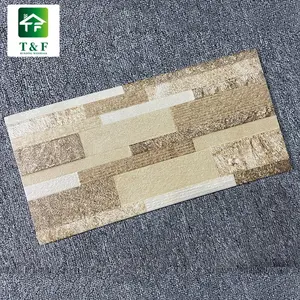
Springletile Exclusive Custom Logo Modern Luxury Shiny Gold Stripe Large Format Polished Marble Tiles Marble Floor Wall Tiles

Sunwings Glass Mosaic Tile | Stock In US | Glass And Stone Linear Mix Black Interlocking Mosaics Wall And Floor Tile






















The vintage Peranakan tiles in Malaysia represent a rich cultural tapestry, embodying a heritage that dates back to the early 20th century. These tiles are not merely decorative elements but are a testament to the Peranakan community's artistic and cultural influences on Malaysian architecture.
The intricate designs of Peranakan ceramic tiles are a hallmark of their identity. Often characterized by floral and geometric patterns, these tiles showcase a fusion of Chinese, Malay, and European styles. The vibrant colors and motifs are not just visually appealing but also reflect the Peranakan's penchant for detailed craftsmanship.
While traditionally used in shophouses and domestic spaces, Peranakan floor tiles have found their way into modern homes and commercial spaces, offering a unique aesthetic appeal. Their application is diverse, ranging from kitchen backsplashes to bathroom floors, indicating their versatility and adaptability to various interior spaces.
Crafted from a blend of clays, Peranakan heritage tiles are known for their durability. The high-temperature firing process ensures that these tiles withstand the test of time, maintaining their color and pattern integrity even in the most humid conditions, making them suitable for both indoor and outdoor use.
The antique Peranakan tiles offer more than just beauty. Their dense composition makes them excellent insulators, keeping spaces cool, a much-valued feature in Malaysia's tropical climate. Additionally, their smooth glazed surface makes maintenance a straightforward task, ensuring that their allure remains intact with minimal effort.
Sustainability is a growing concern, and Peranakan tiles address this by being long-lasting. Their longevity means less frequent replacement, contributing to waste reduction. Moreover, the materials used in their creation are often natural and non-toxic, aligning with eco-friendly building practices.